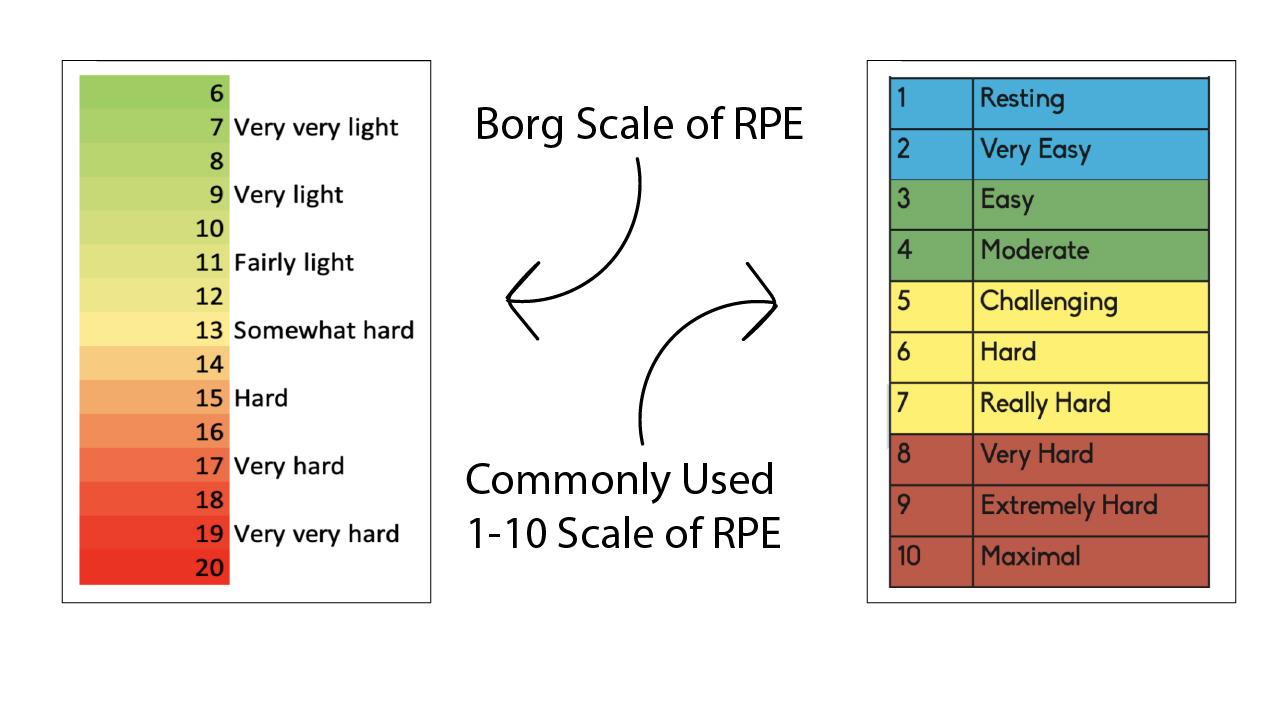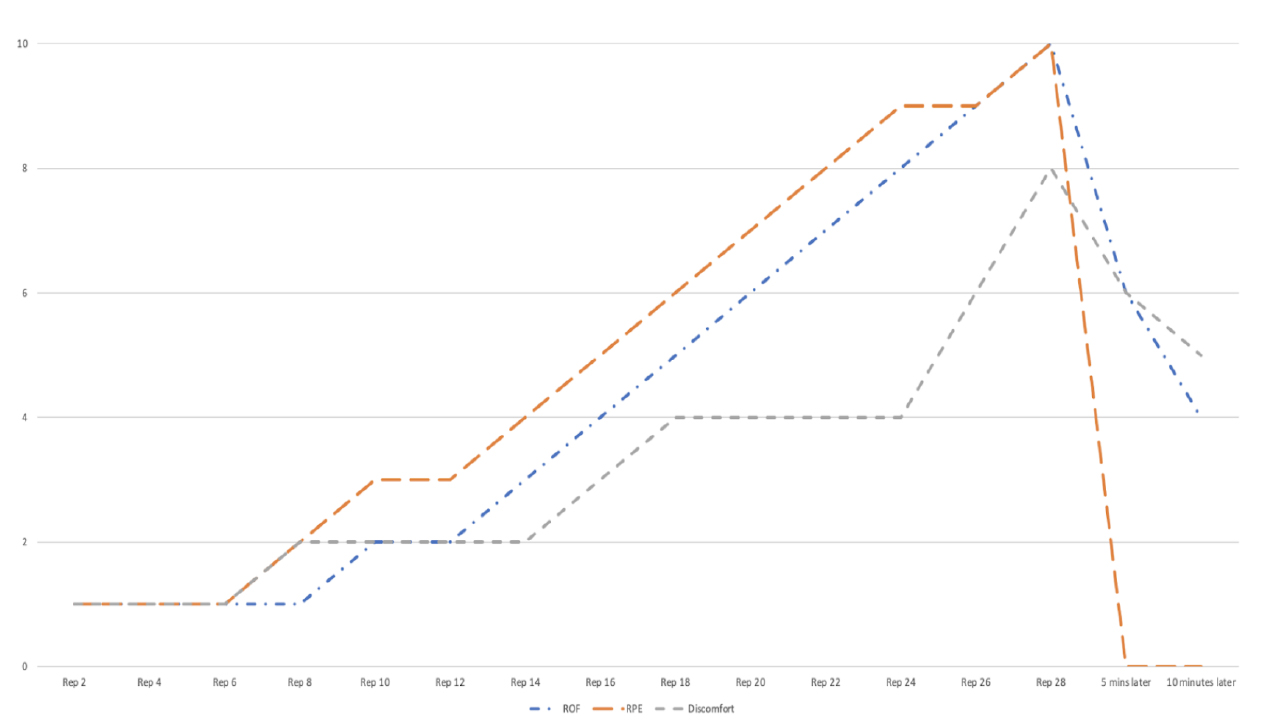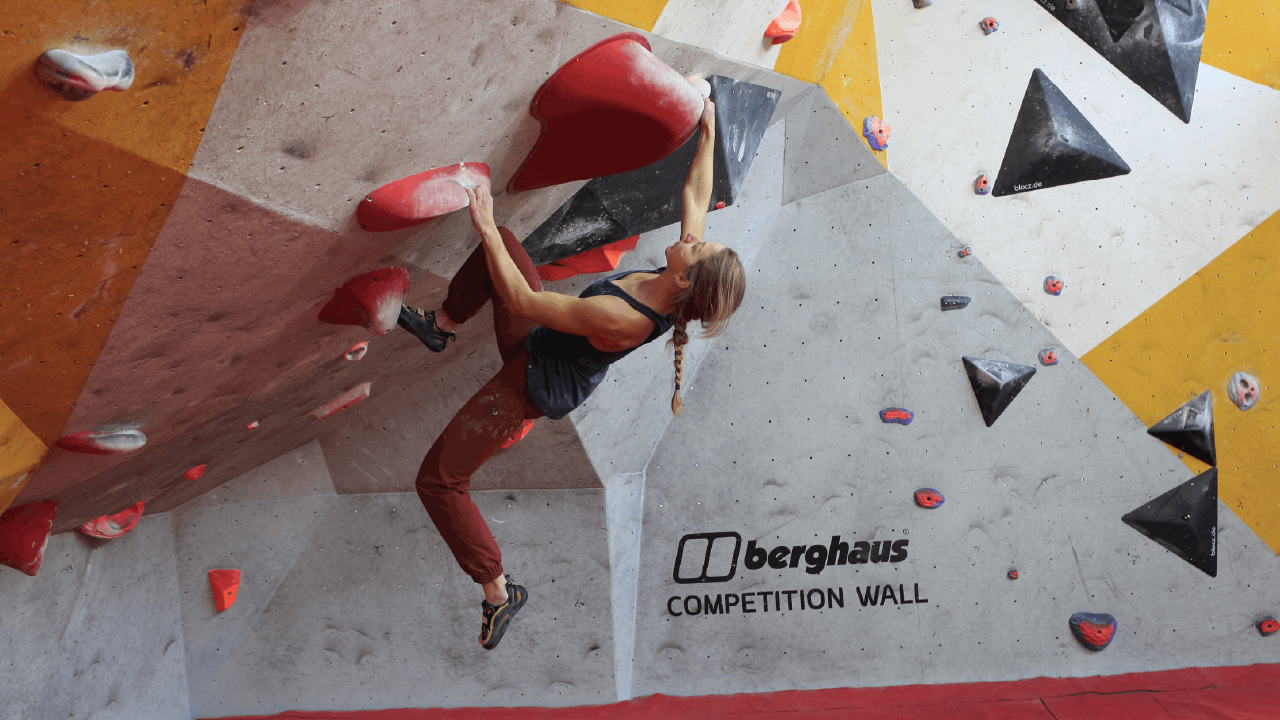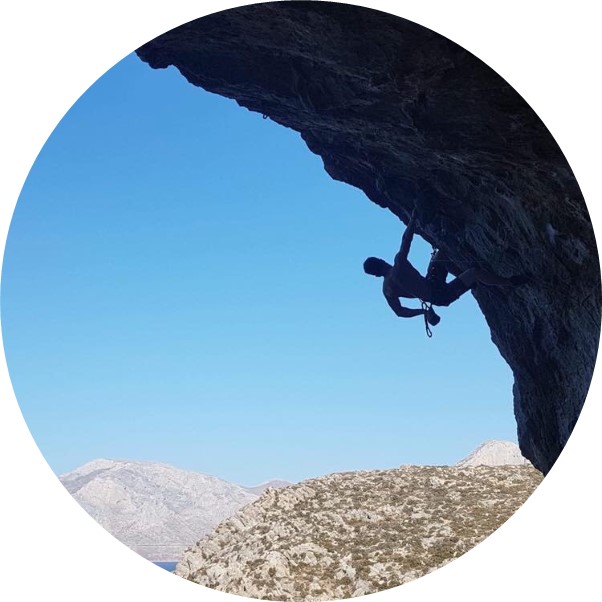Rate of Perceived Exertion in Training
Every 2 weeks here at Lattice, the coaches get together and take it in turns to lead a discussion on a topic of their choice. We use these sessions to further educate ourselves and share ideas on the wide range of topics that play into climbing and training for climbing. Here we are looking to share some of the main takeaways so that you can apply them to your own climbing and training!
This week Coach Cam talked about Rate of Perceived Exertion (RPE). RPE can be a very effective way of monitoring exercise intensity, and gauging how overall training load is being managed. On the surface RPE can seem like a simple scale. But everyone’s perception is shaped by their experience (psychosocial as well as physical). So it can be confusing to step into the world of RPE for the first time or with a new exercise.
What is the Rate of Perceived Exertion (RPE)?
The standard definition of RPE refers to the conscious sensation of how hard, heavy, and strenuous a physical task is. It would seem to follow logically that RPE is affected by bodily sensations during exercise, such as muscle pain. Interestingly, however, it has been shown that people can differentiate between effort and these sensations. This perception depends mainly on feelings of effort in the active limbs and is typically graded on a numeric scale from 1 to 10.
This was originally developed by Gunnar Borg in 1982 as a way to estimate heart rate in athletes doing aerobic sports such as running. RPE was originally a scale which started at 6 and went up to 20 with 6 being complete rest and 20 being maximal effort. This was because the average resting heart rate for a runner was around 60 and the average maximum heart rate for a runner was around 200 bpm. So you could estimate an athlete’s heart rate by multiplying their RPE by 10. You could therefore adjust exercise intensity accordingly. Nowadays it is more common to have a scale that ranges from 1 to 10 (which is what we use here at Lattice). This is known known as the modified borg scale.

This scale was based on the concept that most people share a common understanding of “no exertion” and “maximal effort” if they have similar experiences with exercise/ physical activity. Here in lies one of the problems… many of us will have varying experiences when it comes to exercise! We’ll discuss this later. The scale is set around verbal cues. It has been shown to correlate well with physiological markers of exertion in those with good familiarity with the scale. However, across individuals, there is a poor relationship between absolute workload and perception of effort. Imagine two climbers hanging from a fingerboard with 10 kg added, but one climber’s max hang is +10 kg and the other’s is +30 kg. So it is important to emphasise the relative nature of RPE, which is why an understanding of your own capacity for a given exercise is useful.
Additionally, RPE may be affected by things such as mood and the presence/absence of another person (and the sex of that person!). When thinking about how our RPE of a given exercise changes over time, we need to take these factors into account. This is actually why using RPE can be useful because we can modify our training in response to how we are feeling on a given day. Though this requires understanding that lots of things impact our RPE and that it isn’t a case of “I have gotten worse/ weaker”.
Why is it useful for us to learn about RPE?
In short, because it is quite a nebulous term and can cause some confusion around appropriate loading or intensity for a session. RPE can be a really great tool in training. However it requires familiarisation and good instruction/ understanding to be well implemented. “Max effort” is seemingly simple, but integers from there to “no effort” can seem abstract.
How do we go about understanding RPE?
When Cam first started his group session with the Lattice Coaches, he got everyone to individually write down our own definitions of RPE. Try it and see what your definition is! In doing this, you quickly begin to realise how many different interpretations there could be to what, at first, seems a relatively simple concept.
Here are some example of things that the coaches wrote down:
- The effort needed to sustain a certain level of exercise intensity.
- How hard someone is trying relative to their maximum effort.
- A method to autoregulate session intensity whether that is in the session or afterwards.
- The amount of effort that the individual feels they are putting into a given exercise.
It is probably safe to say that if we look at the wider audience of climbers who use RPE in many of their sessions, we can see there may be a wide variety of definitions and interpretations of the scale. However, “effort” tends to be common between different people’s definitions.
Next, we individually defined “effort” (again, try it!). Given how much we use this word, it may feel surprisingly hard to define. Here is a small selection of how some of our coaches defined “effort”:
- How hard or easy something feels
- The mental energy required to complete a task
- How fatigued something makes you feel
Once again we see variation between different people. Herein lies the crux of the situation. These variations between people’s understanding of RPE can lead to confusion and the potential misunderstanding of our exercise-related sensations (think coach-climber communication!). E.g. we may be rating the perception of fatigue instead of effort.
To add another layer of complexity, if you were to do any exercise for a long duration or a large number of repetitions your effort level would gradually increase over the duration. For example, if you were to do a single bicep curl with a 5 kg dumbbell, the effort level would likely be relatively low. But if you were to do bicep curls with that same 5 kg dumbbell until you couldn’t do any more, the effort level would gradually increase through the whole scale until you reached failure. Give it a go and see how your feeling of effort changes!
The standard definition currently used for RPE is “how hard, heavy, and strenuous a physical task is”. But if we look at the previous exercise we can see that these don’t align with the experience of doing multiple reps of an exercise with a fixed weight. The heaviness doesn’t change, but the effort level increases. This suggests that further research is needed to more clearly define RPE. However because it is commonly cited in the literature and a better definition has not been suggested, we will continue to use it in this blog.
How might we understand RPE in a climbing specific exercise?
An exercise many of us are familiar with is repeaters. We got a member of the coaching team to perform bodyweight 7:3 repeaters to failure. We monitored some of the different measures that could relate to “effort” throughout and 5-10 minutes after. We recorded their perceived rating of effort, their rating of discomfort and their rating of fatigue. This is clearly not the most rigorous scientific experiment and important to emphasise this is one person’s experience. But it was a useful way to see how the different measurements relating to “effort” played out nonetheless.
Below you can see charted the results of this experiment:

While the results closely track a lot of the way, there is certainly a difference between each of them. Generally all the markers were very low to begin with and ramped up throughout. However discomfort began to separate from the other markers and increased at a slower rate. Effort and fatigue seem to be very similar, so it may seem like we could use these interchangeably, but this isn’t the case. By asking them to rate their discomfort, effort and fatigue 5 and 10 minutes after the test, we see the distinction between effort and fatigue. This shows the importance of considering the point in time that we monitor our RPE, when using it to gauge training load and progression.
We can clearly distinguish between effort and fatigue. If another set of repeaters were to be performed, the fatigue would start higher (depending on how much time had elapsed between the sets). This translates into training when we consider the number of sets we are doing of a given exercise and the rest between. This isn’t to say that measuring fatigue can’t be useful, but it may not be equally useful in all scenarios. For example, it can be a useful measure for the intensity of endurance based exercises, or when used in combination with RPE to get a better understanding of the session feeling.
Allostatic load and RPE
Allostatic load is the name given to external stressors (outside of training/climbing) that the body has to recover from and adds to a person’s overall load. For example, a manual labour job will come with a higher allostatic load than a job which is very relaxed. Mental stressors also count towards allostatic load, such as high stress jobs, or a high stress relationship, or even exam time. It has been well documented that mental fatigue increases RPE in exercise. This is why tracking RPE and loads or grades used can be a very useful measure of overall loading of your training. If RPE is increasing but load isn’t, then the overall load (training load and allostatic load) is likely too high. Similarly if RPE is staying the same and load is going down, then the overall load may be too high. This is a “may” because there are also things like motivation and training monotony that could be at play rather than load. So by tracking RPE we can get a metric which can inform us on how we might want to adjust things.
Rate of fatigue
The Rate of Fatigue (ROF) scale was developed in 2017 by Mickelwright et al. It was found to have a good validity during ramped exercise to exhaustion, resting recovery and daily living activities. It was also found to be different from RPE during recovery from exercise (as we demonstrated above).
The ROF (rate of fatigue) scale is similar to the RPE scale in that it is also a scale of 0 to 10, however in this scale the metric is different. A score of 0 would indicate that you do not feel at all fatigued in the forearm. An example of this might be soon after you wake up in the morning after having a good night’s sleep. A response of 10 would indicate that you feel totally fatigued and exhausted in the forearm. An example would be any exercise that takes you to failure, for example bodyweight repeaters on a fingerboard to failure.
Using two exercise related sensations as metrics
We’ve mentioned three different exercise related sensations – effort, discomfort and fatigue. These are clearly different metrics, however they are also very useful things to track. Using two of them will likely allow you to get closer to the correct loading in your sessions. In the below examples we use RPE and ROF.
Example 1 – A strength exercise: if you were to do an RPE based max hang session, the RPE should be relatively high, say around 8 or 9. The fatigue should be low, maybe around 2 by the end of the session.
Example 2 – A high intensity endurance exercise: if you were doing an anaerobic capacity session like Linked Boulders, the effort for the first rep would likely be around a 6 RPE, building to a 10 in the last set. The fatigue will be high at the end of the session, possibly around 8-10.
Example 3 – A low intensity endurance exercise: if we went down to the bottom of the intensity scale for a continuous aerobic capacity session we can use fatigue and RPE to refine the session intensity. For example 10 minutes of ARCing should rate low on both RPE and fatigue.

The reps/seconds in reserve approach
To help with RPE based intensity, we recommend that clients use a reps or seconds in reserve approach.
If you were to complete a 7 second hang at an RPE of 7 you would want 3 seconds in reserve. This means you would want to find the load that you could hold for 7 seconds but have 3 seconds left in the tank.
To verify if you have got the intensity correct, after a rest day you could complete a familiarisation protocol. Following a thorough fingerboard warm up you will select your RPE prescribed load and hang this to “failure”. (choose “failure” point based on training/testing experience – put your feet down at the moment of failure of form or if less experienced put your feet down when you feel you have 1 second to spare!). If your actual time of failure matches your theoretical time to failure in your RPE session, then you have got the intensity correct and can continue with this. If not, then calibrate the load until you achieve the theoretical time to failure.
If we were to use the RPE 7 example above you would want to hang this load for 10 seconds. If you are above or below this value then recalibrate until you achieve 10 seconds. It’s worth bearing in mind that going to failure carries an elevated level of injury risk, so try to stop just shy of failure and use that to inform your loading and RPE. Be well rested and warmed up, and do not complete this frequently. This should be something you can check in with near the start of a protocol, then you can resume gradual progressive overload as normal.
Main take away points
What is RPE?
RPE is a tool that can be used to monitor exercise intensity and prescribe training load. For climbing, we use a modified 10 point scale and rate how hard and strenuous a task is to complete.
RPE is dependent on experience
The scale should be anchored to past experiences. This is important to form a good spectrum of our perception of effort! Before starting each session, write down what an effort level 1, 5, 8 and 10 should feel like for these exercises. Then rate your effort based on these anchors.
When to rate RPE
As shown in our mini ‘experiment’ we should rate our effort in the moment, not how we feel afterwards. It could be useful to record other exercise related sensations (for simplicity we would recommend sticking to RPE and ROF).
Practice and Familiarise yourself with the RPE scale
The most important thing to do is to familiarise yourself with the RPE scale. Like any task there is a learning effect involved and it will not be easy to get it right straight away. This is not something to be disheartened about and there are some things that can be useful as part of this learning process.
Read more of our Lattice Training Insights on the Lattice Training Blog






